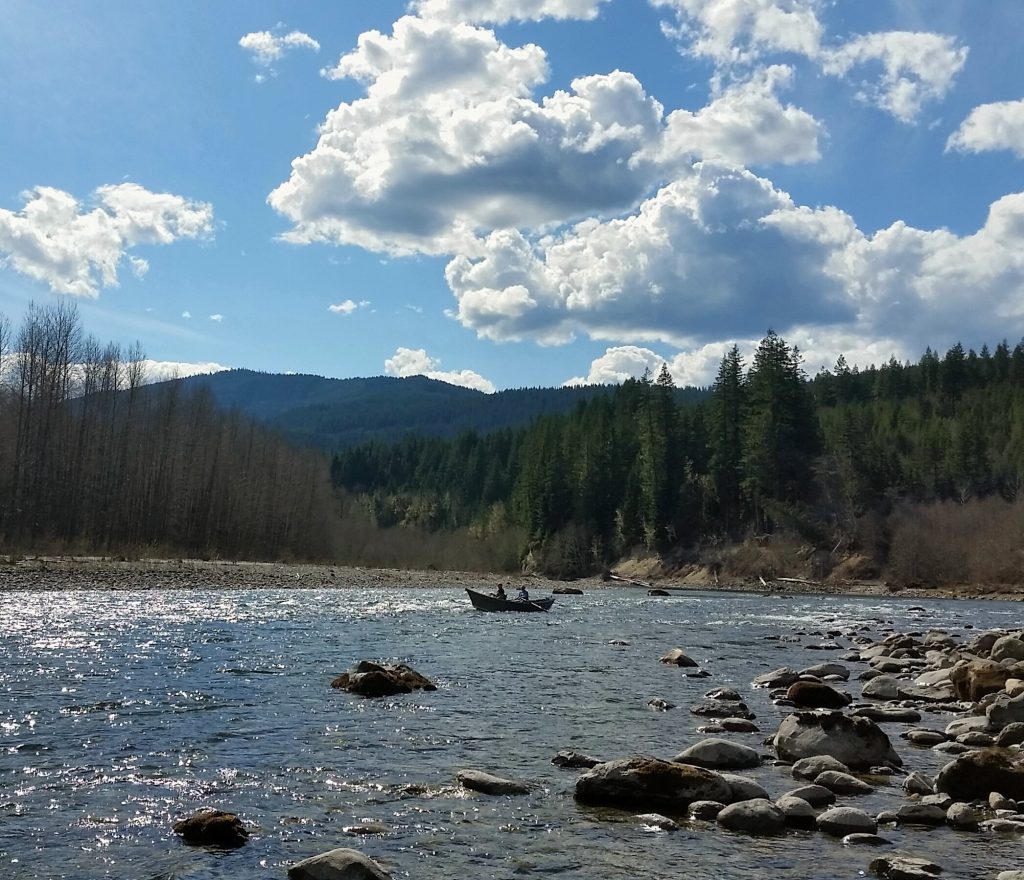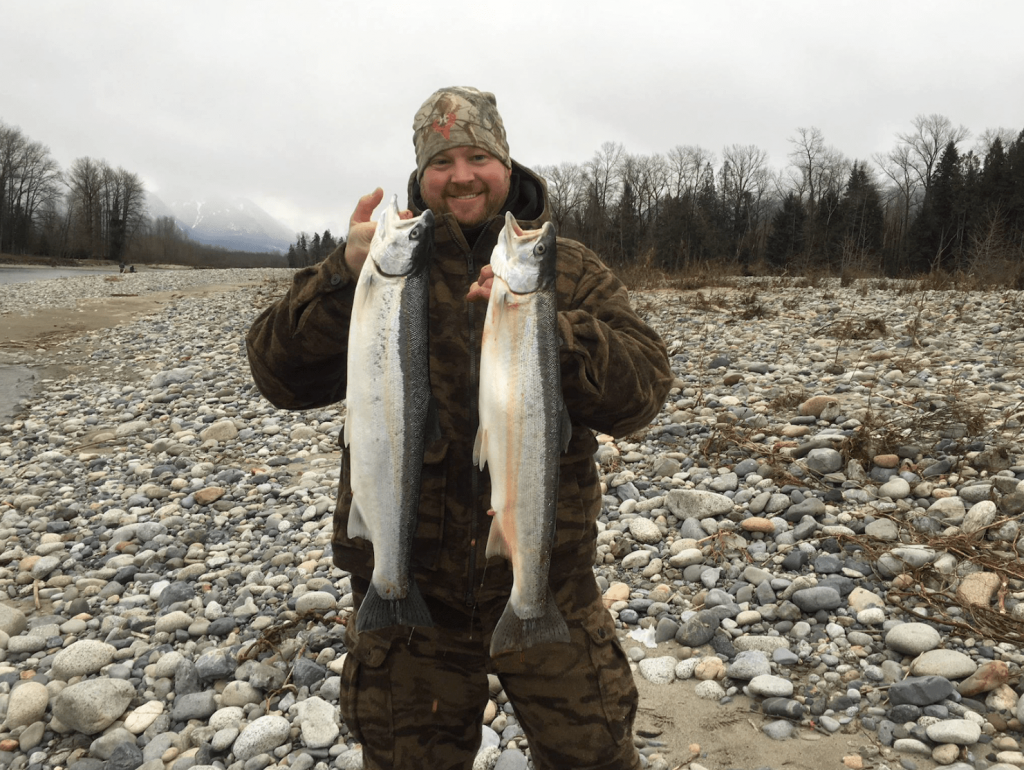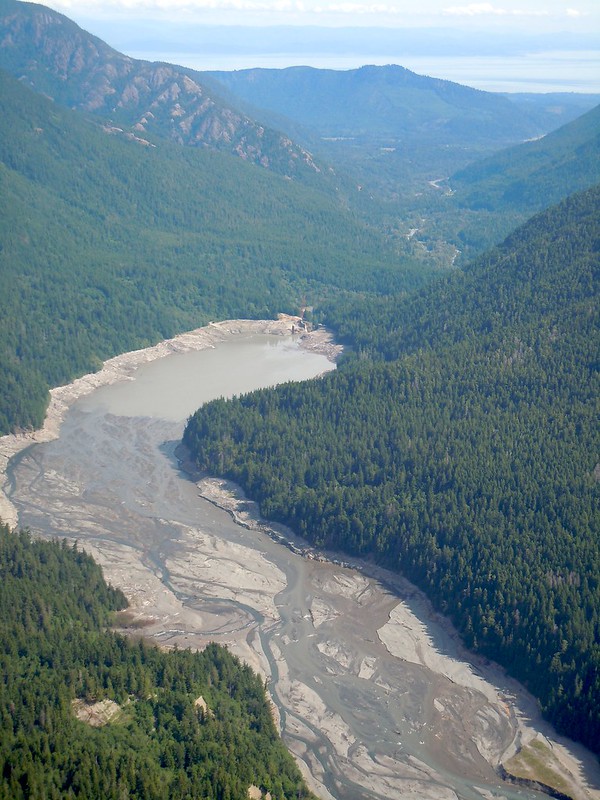
‘QuickSilver Portfolio’ For Puget Sound Steelhead, Fisheries Proposed
Puget Sound steelhead managers and advisors will roll out their “QuickSilver portfolio” proposal for local rivers later this week, a plan three years in the making that aims to eventually provide a diversity of angling opportunities while protecting and rebuilding struggling runs.
It includes a mix of continued and new hatchery production, wild broodstock-powered conservation and potential fishery programs for a handful of streams, and increased catch-and-release fisheries on native runs elsewhere as returns allow.

“While we can’t return to the past, we believe that we can achieve a brighter future for steelhead and for this and future generations of anglers. To be sure, there is still much to learn about steelhead and how to best manage them. But one thing we know with certainty is that steelhead are incredibly resilient. They will rebound if given the chance. It is our intent to give them that chance while keeping anglers on the water,” reads a statement from the final draft of the 30-page recommendation by WDFW and its Puget Sound Steelhead Advisory Group.
Members include Mark Spada of the Snohomish Sportsmen’s Club, retired WDFW North Sound fisheries biologist Curt Kraemer, Rich Simms of the Wild Steelhead Coalition, Al Senyohl of the Steelhead Trout Club of Washington, Rob Masonis and Jonathan Stumpf of Trout Unlimited, Andy Marks of Coastal Conservation Association and representatives of Wild Fish Conservancy and Native Fish Society.
The nut of the complex proposal, reached after two years of consulation with steelhead biologists and federal fisheries staffers, is “to provide the opportunity to test alternative strategies in different watersheds.”
It would continue the existing early winter steelhead programs on the Snohomish and North Fork Stillaguamish systems, enhancing the small release on the Dungeness by a couple thousand smolts and adding a new one on the Big Quilcene with 12,000 smolts.

The plan also proposes to test wild broodstock conservation programs on several rivers “where habitat is relatively good but the steelhead run is depleted,” including the Nooksack — where the early winter hatchery program would end — and Cedar, plus the Skokomish, where one already exists.
Existing broodstock programs on the Green and White Rivers could lead to fisheries, either catch and release or consumptive.
And it would manage rivers with “relatively good” runs and habitat exclusively for wild stocks and catch-and-release fishing, like we’ve seen on the Skagit and Sauk in recent years and possibly expanding that to the Samish, Elwha, Nisqually, Nooksack and Skokomish.
It says that the recently unshackled Elwha and increased flows into the Skokomish “provide the greatest potential for future catch and release fisheries” in the Hood Canal/northeastern Olympic Peninsula.

The plan arrives with steelhead runs and steelheading in Puget Sound a shadow of a shadow its former self as long-term, all-encompassing habitat degradation has taken a heavy toll, ocean conditions have soured, the fish were listed for protection under the Endangered Species Act, hatchery releases have declined, and harbor seals and other piscovores snarf down more than their share of outmigrating smolts.
“Experience has taught us that responsive steelhead fishing requires a science-based approach to management with an abundance of consideration for the long-term health of the wild fish. Our recommendations reflect that approach. However, that represent only a small portion of the story. Healthy wild steelhead and other native salmonid populations require healthy rivers,” Kraemer points out in the plan’s introduction.
The portfolio includes the previously discussed replacement of the Skykomish Skamania summer-run program with one based on natural origin fish from further up the watershed.
“Providing a diversity of fishing opportunity is essential to ensure the support of the recreational fishing community. To the extent possible within conservation constraints, the portfolio provides for both catch & release and catch & keep fisheries,” say Spada of the Snohomish anglers’ organization and Gary Butrim of John’s Jigs in the intro.
One idea it pitches is new harvest-oriented programs on the Sammamish and Deschutes Rivers, where it’s unlikely wild populations would rebuild or ever existed in the first place, and proposes releases of 30,000 and 50,000 smolts, respectively.
On the one hand, for the wide gamut of Puget Sound steelheaders, it’s a portfolio of hope that one day we may be able to spread out again on myriad waters, not just the few that are open for limited amounts of time or most productive in crowded stretches.
And on the other, it comes with a briefcase full of caveats – various elements depend on reaching management agreements with various tribes, ESA approvals would need to be secured, and how does WDFW pay for all the monitoring and research not to mention plan writing?
This Friday morning at around 10:50 a.m., its proponents will begin to lay it all out for the Fish and Wildlife Commission.
“We stand ready to work with you to engage stakeholders, promote legislative support, secure funding, and assist WDFW in implementation,” they state in a presentation posted ahead of the meeting. “Together, we can conserve wild steelhead, restore fishing opportunities, provide economic benefits to our communities, and create a future in which the rich tradition of steelhead fishing is continued and passed on to future generations.”
